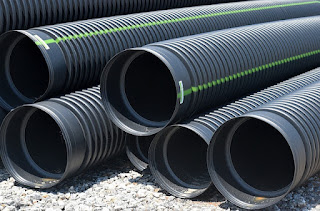The Role of PPR-C Pipes in Sustainable Building Design
In today's world, sustainable building design is no longer a choice but a necessity. As we strive to reduce our environmental footprint and address climate change, every component of a building must be carefully chosen to ensure efficiency, durability, and eco-friendliness. One crucial element often overlooked is the plumbing system, and in this blog post, we'll discuss how PPR-C (Polypropylene Random Copolymer) pipes play a significant role in sustainable building practices, energy efficiency, and LEED certification.
1. Material Sustainability:
PPR-C pipes are an excellent choice for sustainable building design due to their eco-friendly composition. These pipes are made from non-toxic, recyclable polypropylene material. Compared to traditional materials like PVC and metal pipes, the production of PPR-C pipes generates fewer greenhouse gas emissions, and they can be recycled at the end of their lifespan, reducing waste in landfills.
2. Energy Efficiency:
One of the key factors in sustainable building design is energy efficiency. PPR-C pipes contribute to energy efficiency in several ways:
a. Thermal Insulation:
PPR-C pipes have excellent thermal insulation properties, which means they help maintain water temperature for longer periods. This reduces the need for additional energy to heat or cool the water, resulting in energy savings and lower utility bills.
b. Smooth Interior Surface:
PPR-C pipes have a smooth interior surface that minimizes friction and pressure drop. This means the water flows more efficiently through the pipes, reducing the energy required to pump water throughout the building.
c. Leak-Free System:
PPR-C pipes are known for their leak-free performance. A well-maintained plumbing system with minimal leaks ensures that water is not wasted, reducing the energy required to pump and treat water.
3. LEED Certification:
LEED (Leadership in Energy and Environmental Design) is a globally recognized green building certification system. PPR-C pipes can contribute significantly to earning LEED points in the following categories:
a. Water Efficiency:
PPR-C pipes promote water efficiency by reducing leaks and providing better insulation. LEED awards points for water-efficient plumbing systems that help reduce overall water consumption.
b. Indoor Environmental Quality:
PPR-C pipes do not emit harmful substances or odors, contributing to a healthier indoor environment. LEED encourages the use of low-emission building materials to improve indoor air quality.
c. Innovation and Design Process:
The choice of PPR-C pipes demonstrates a commitment to innovative and sustainable building practices, which can earn additional LEED points.
4. Longevity and Durability:
Sustainable building design is not just about immediate benefits but also about long-term sustainability. PPR-C pipes are known for their durability and longevity. They are highly resistant to corrosion, scale build-up, and chemical degradation. This means fewer replacements and less waste over the life of the building, further reducing the environmental impact.
5. Reduced Maintenance and Repairs:
PPR-C pipes require minimal maintenance and have a low likelihood of developing leaks or other issues. This not only saves money but also reduces the resources and energy required for repairs and replacements, aligning with sustainable building goals.
Contact KPT Pipes - Pipes Manufacturing Company in India for more info on sustainable building design
In conclusion, PPR-C pipes play a crucial role in sustainable building design by contributing to material sustainability, energy efficiency, LEED certification, longevity, and reduced maintenance. Choosing PPR-C pipes for plumbing systems is a responsible and environmentally conscious decision that aligns with our global efforts to create more sustainable and eco-friendly buildings. It's a small but essential step towards a greener and more sustainable future.




Comments
Post a Comment